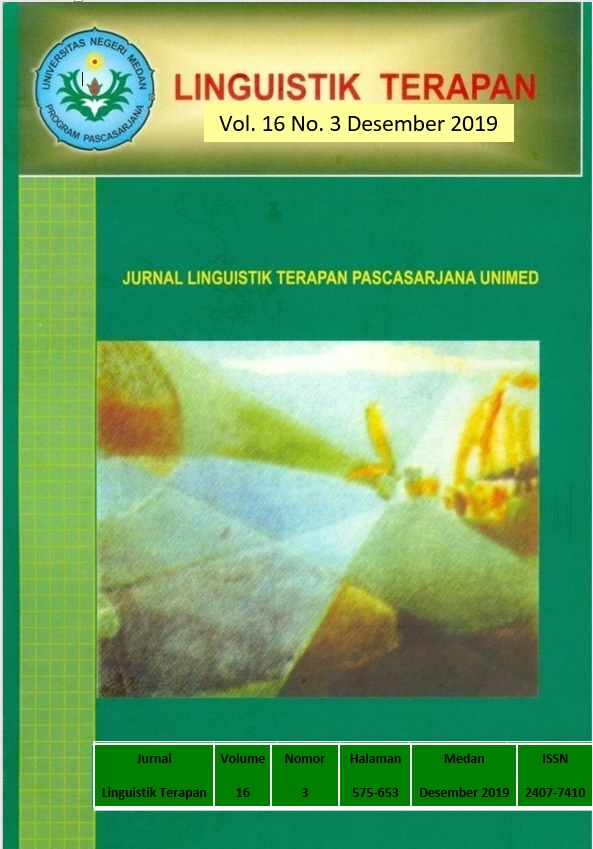FIGURATIVE MEANINGS OF PERIBAHASA TEXT BOOK
DOI:
https://doi.org/10.24114/lt.v16i3.19611Abstract
Proverb is one of many ways for people in communication. Linguistics and people cognition play vital role for people in constructing proverbs and it also depends on their natural background knowledge. Figurative meaning as a component which found in proverbs gives unexpected orientation toward subject matter. This research deals with the figurative meanings of Peribahasa Text Book. This study revealed the investigation of the types of figurative meanings in Peribahasa text book. This research is conducted by the qualitative research. The data are analyzed by applying interactive models of Miles, Huberman and Saldana. Based on the analysis data then there are another six figurative meanings beyond personification, simile, metaphor, metonymy, and synecdoche , they are Irony 26 proverbs (7.1%), Hyperbole 23 proverbs (6.3%), Symbol 15 proverbs (4.1%), Understatement 6 proverbs (1.6%), Paradox 7 proverbs (2%), and Allegory 1 proverb (0.3%) and the rest refers to the construction identity, such as reiteration formula, cultural figurative expression and proverbial reality. This implied that proverbs were created by genius imagination, by chosing the words, then combining them and producing the idea formulation in the form of scenic series of words and full of aesthetics.Keywords: Proverbs, Figurative Meanings, Construction IdentityDownloads
Published
2020-09-01
How to Cite
Chairani, E., ., Z., & Minda, S. M. (2020). FIGURATIVE MEANINGS OF PERIBAHASA TEXT BOOK. LINGUISTIK TERAPAN, 16(3). https://doi.org/10.24114/lt.v16i3.19611
Issue
Section
Articles






